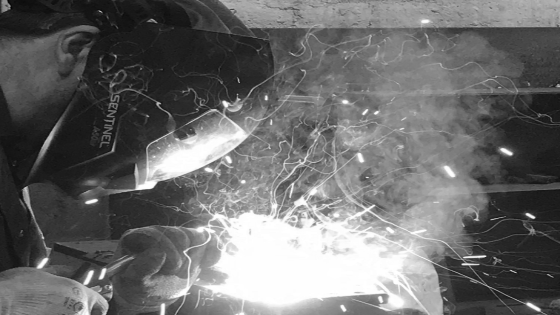4: Choose the Most Effective and Reliable Hazard Control Measures
After you have narrowed down the different options for your hazard control measures, you need to choose the most effective and reliable. This will help you to ensure you consistently minimise the release and spread of the hazardous substance. It’s important to consider that some methods of control are dependent on variable factors. For example, protective gloves are only effective if they are the right size and used correctly. It is therefore much better to change a process to minimise the emission of a hazardous substance at source. Once you have established the most effective and reliable control options for the particular situation, they need to be focused on the primary source(s) of exposure. Seek professional advice to ensure the suitability of your hazard control measures. Remember, you may need to have your control measures professionally designed and engineered to ensure future reliability.
What Control Options are Available?
There are many different hazard control measures available. However, it is important to stress that you should consider the effectiveness of each control measure in their own right. Control measures vary from the complete elimination of the hazardous substance, to the use of PPE by exposed individuals. COSHH regulation 7 outlines some of the different options available. However, fundamentally there are three different ways in which hazardous substances can be controlled:
Substance Elimination
The complete elimination of a hazardous substance from a workplace is naturally the best possible solution; this approach should always be explored first. Here, there is no possible risk of exposure. Have you considered all of the viable alternatives to the use of the hazardous substance?
Process Change
If it is not possible to eliminate the hazardous substance, the next best option is to change the process to minimise its release. Changing a process is usually a more permanent solution. However, if it is not possible to do this, you will need to consider implementing external process controls.
Process Controls
Controls can be applied to the process to minimise exposure. Unfortunately, process controls are usually less reliable than process changes and generally require more significant and regular maintenance.
Why Process Controls are Generally Less Reliable
An example of a process control method is an LEV (local exhaust ventilation) hood. LEV controls and then removes contaminated air. However, its effectiveness depends on both the suitability and maintenance of the LEV system, as well as how the operator uses it. PPE is also subject to human error and misuse, meaning that although it may appear to be the cheapest and easiest solution, this is often in direct contrast with reality. The cost of providing more effective control options may actually be cheaper. Because of the high opportunity for variability and inconsistency in process control methods, they are generally less reliable and effective.
Developing Integrated Hazard Control Measures
You need to find an appropriate and integrated control solution that’s both effective and reliable as well as practicable and workable. You may use one control measure or a combination of different control measures in order to achieve this.
Finding an Appropriate Solution
Because of the number of different control measures available and the sheer variability in working methods and machinery, professional advice should be sought wherever possible. Ultimately, your solution needs to be engineered to your specific requirements. The result? A bespoke, reliable hazard control method that fulfils its intended purpose! However, it is essential to ensure regular testing and maintenance takes place to ensure all equipment and control measures are working as they should.
We’re here to help
If you need any help or advice, we’re happy to assist. Our experienced occupational hygienists have many years experience covering a wide range of industries. We can carry our air monitoring to assess the exposure levels, test and assess your LEV System, give advice on any control measures and provide recommendations to help you comply with the COSHH Regulations and the new limits.
Our approach
Get in touch with Workplace Exposure, either give us a call on 0800 689 4386, or fill in our enquiry form to discuss your monitoring or consultancy requirements. We’ll then provide you with a no obligation proposal, we can often give an initial idea of fees whilst we discuss your needs. Once you’ve accepted our proposal we can then schedule the work. Following our site visit we’ll provide you with a comprehensive report giving you advice, recommendations and control measures where appropriate. Implement the outcomes for compliance and a happier healthier workplace.
